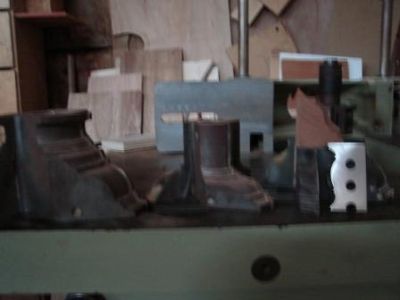Question
At the shop where I work we run a glass stop in maple and red oak, and for a year have had a fine product (running a Wadkin GA).
A month ago, we started getting chip marks on the faces of the wood (top and outside heads). The inside and bottom come out perfect. We have tried everything we could think of, adjusting the suction draw, changing the knives and heads, using high-speed steel instead of carbide knives, we've even put makeshift baffles in the collector hoods.
We have three other moulders, and have no such problems with them. Suction from the blower is more than adequate. I would appreciate any suggestions.
Forum Responses
Under normal operating conditions the chipping can come from dull or blunt tooling, improperly dried lumber, and control problems.
These are only a few of the possible problems. Since you state that other machines are not giving you the same problem, I would lean toward a machine alignment problem. If the fences were not aligned correctly the wood would be allowed to move. This can cause a variety of finish problems. The hold-downs and hold-overs can also allow the wood to move, causing problems.
I have had a few problems with chipping caused by the extension of the knife out of the head. If the extension is not enough, the chip can be forced to curl faster and pull the wood.
Another area that should be looked into is the belts that you are using. Worn or damaged belts can cause the spindle to vibrate. This vibration will show up on the wood as chatter, tear out and chipping.
You might also look at the wear on the table and fences. Worn parts can cause loss of control, creating problems in the finish.
Dave Rankin, forum moderator
I just had a thought: On the top and side heads, we have a section of flexible pipe, corrugated, about 6-feet long. Could the corrugations cause enough interference in the air flow to cause the chip marks?
Dave
I have also had to adjust the feed rate to meet the demand for stock removal. Some tooling changes I made were to the hook angle (to 5 degrees) and to a head with a larger gullet.
Comment from contributor D:
I have similar problems with chip marks or bruises when there is a burr on the edge of my knives from grinding or honing. I take a fine diamond file and rub it a couple of times across the face of the knives. The shavings get stuck on the burr, causing it to hang onto the knife for a round trip back onto the surface of the wood.
